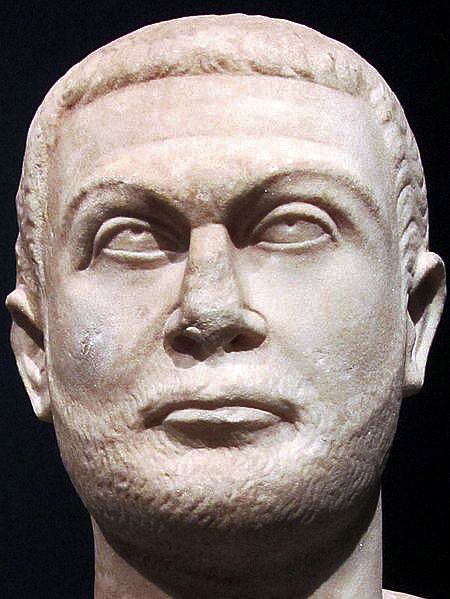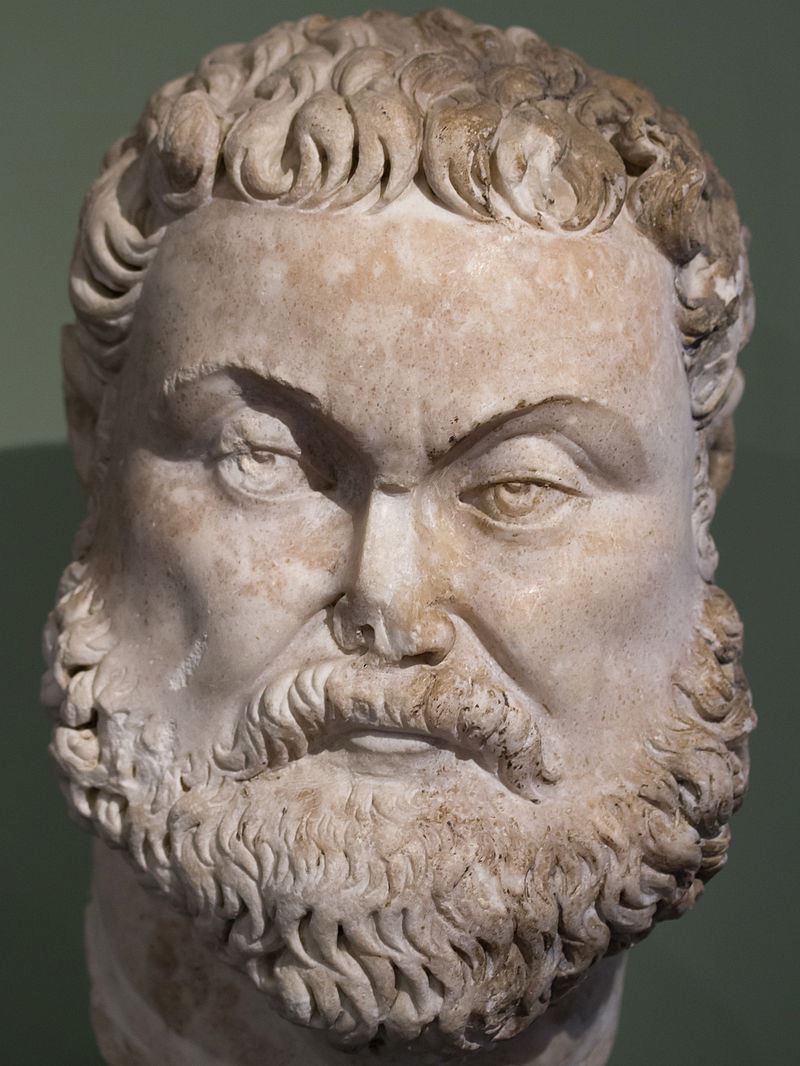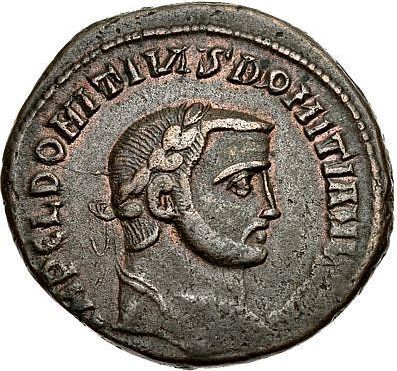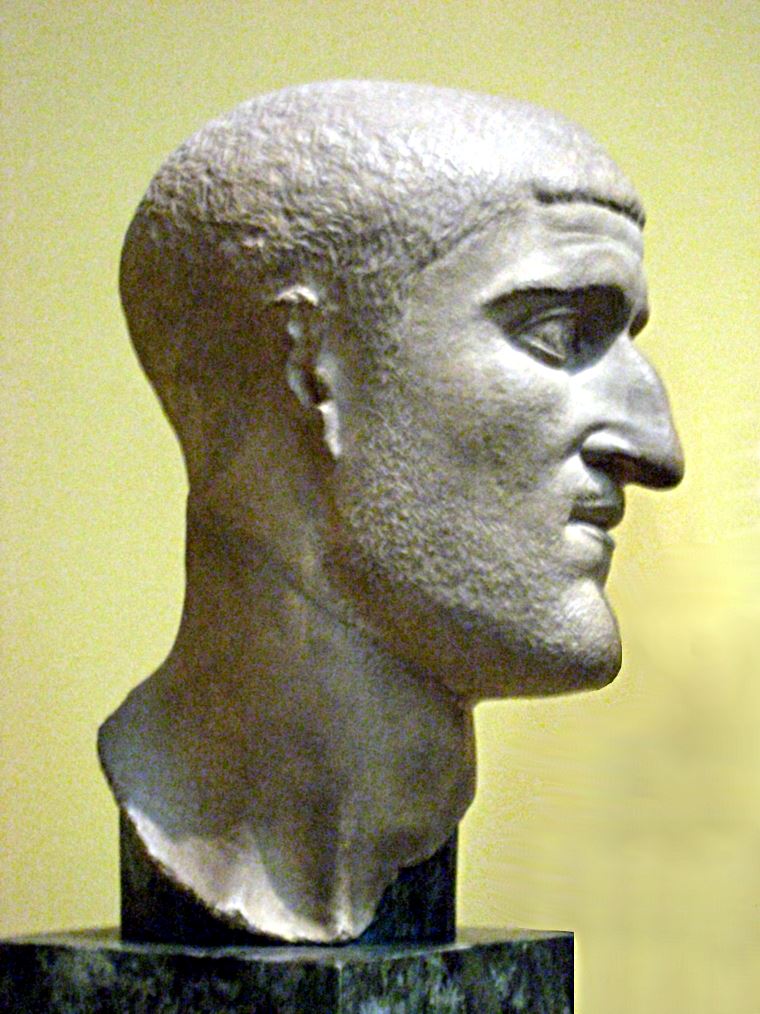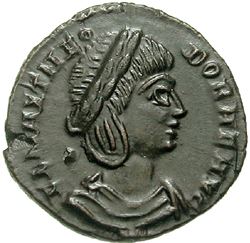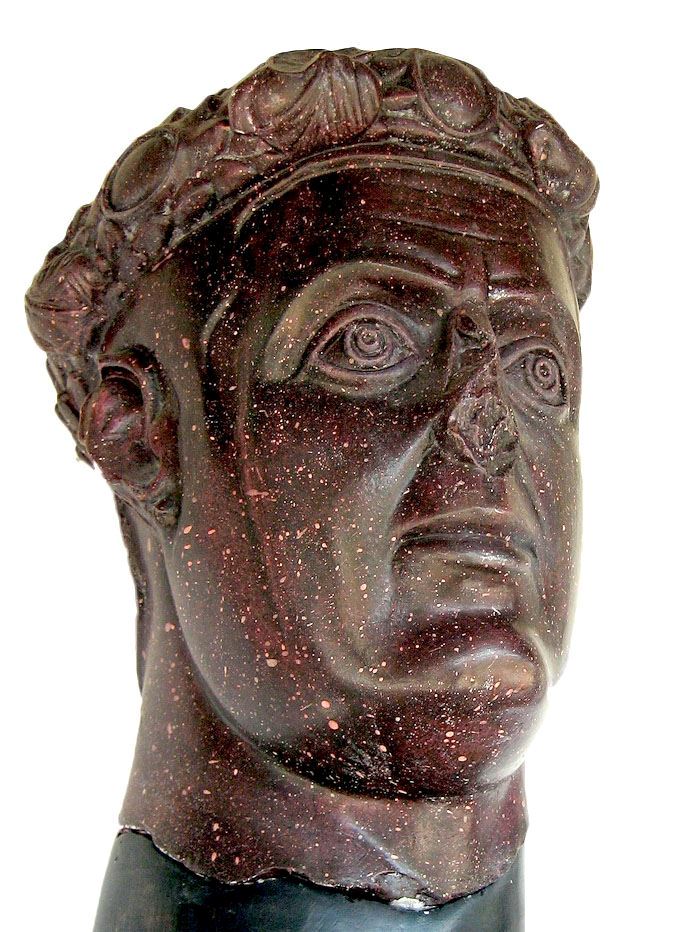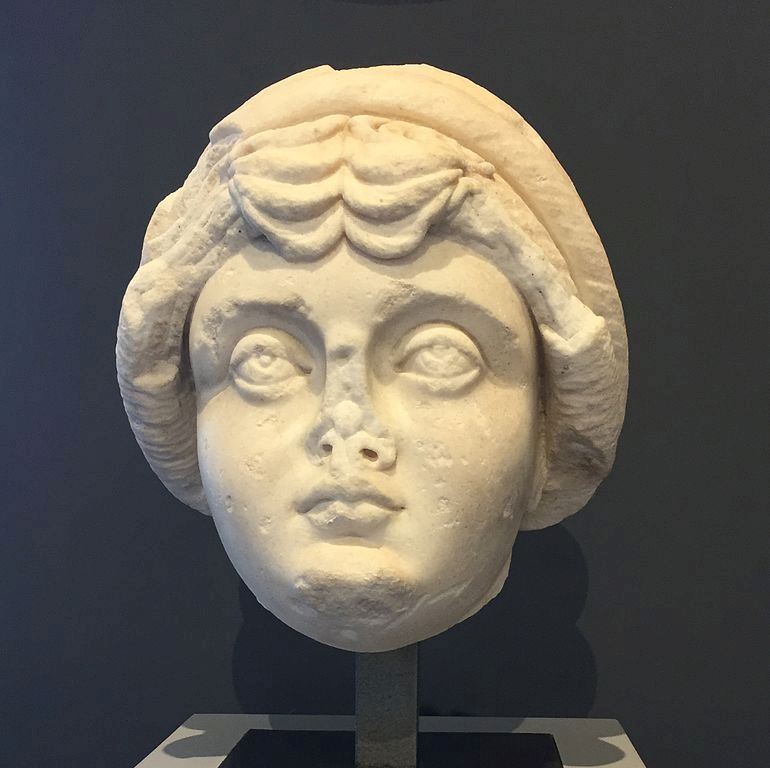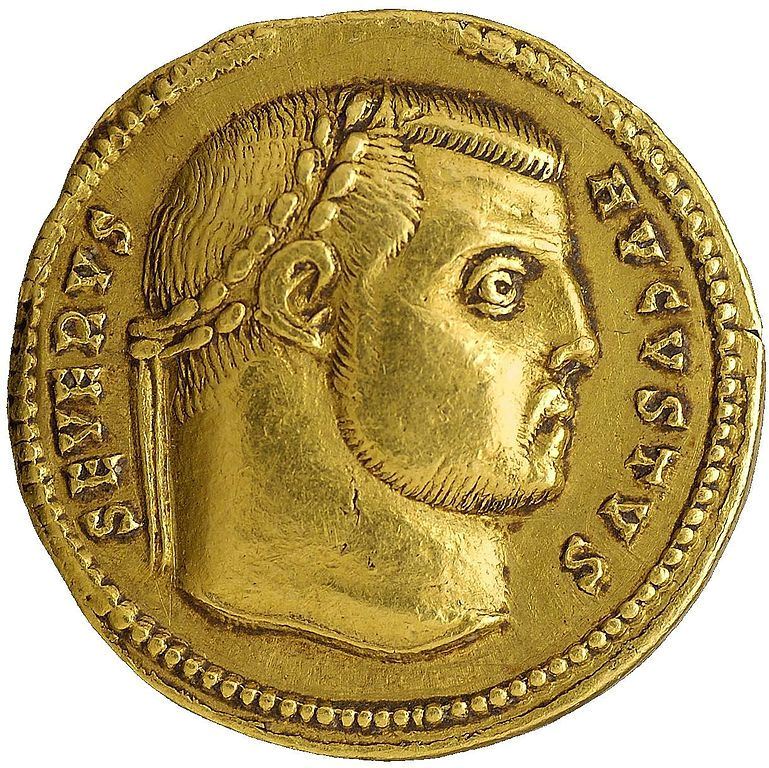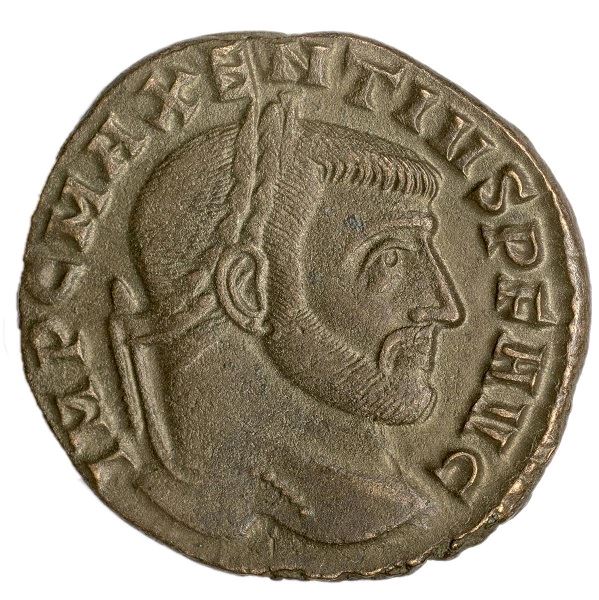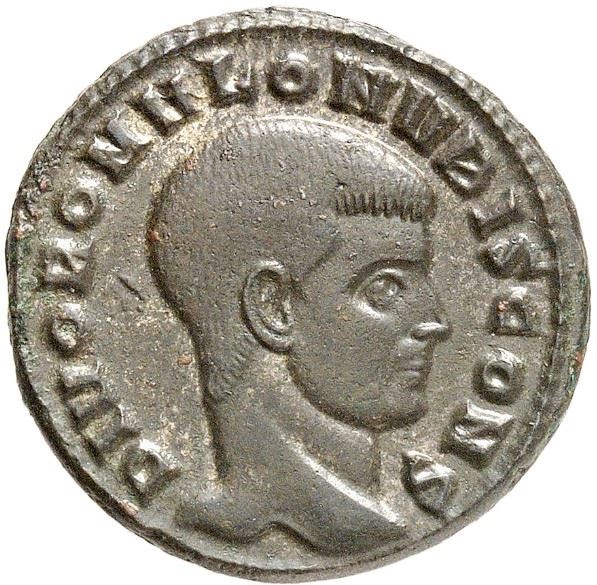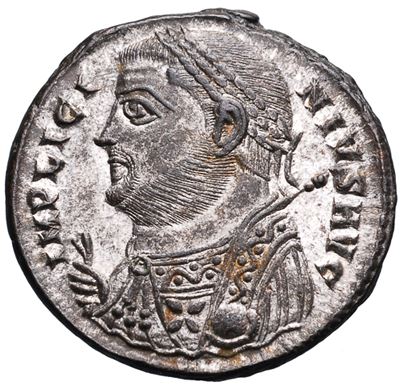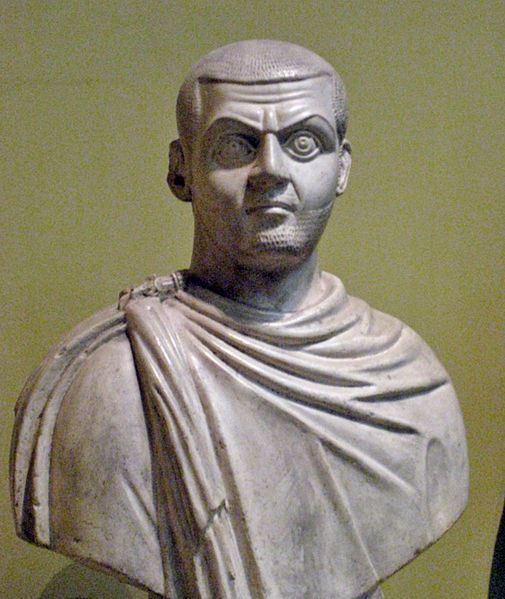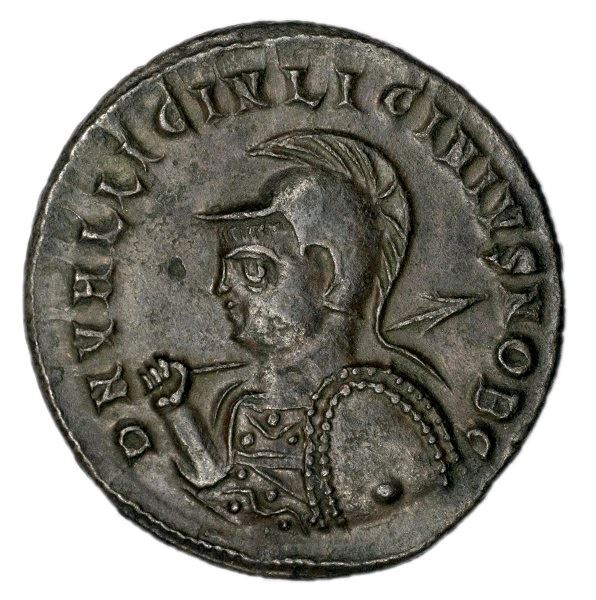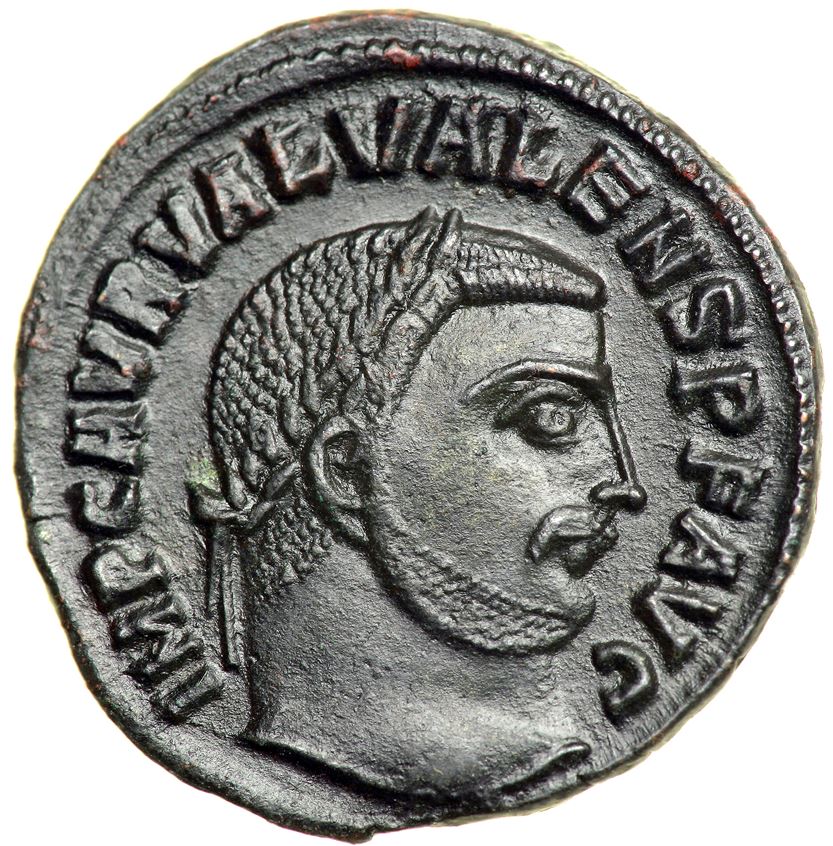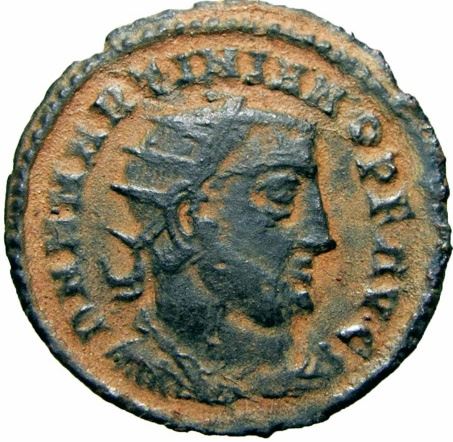'Tetrarchy' means the government of four people, and was a system introduced in 293 AD by Roman Emperor Diocletian.
Under the Tetrachy, the sovereignty of the Roman Empire was divided amongst four people; two Augusti or 'Senior Emperors' and two Caesars or 'Junior Emperors'. The four emperors based themselves not in Rome, but in cities closer to the frontier, from which they could each oversee and protect a part of the Empire.
Unfortunately, the system was too naive - when Diocletians & Maximian's reigns were up they abdicated, but the next set of Augusti were less concerned with upholding the system and soon the Tetrarchs were at each other's throats.
By 313 AD, most of the Tetrarchs and claimants were dead, and by 324 the empire was once again united under Constantine the Great.
Under the Tetrachy, the sovereignty of the Roman Empire was divided amongst four people; two Augusti or 'Senior Emperors' and two Caesars or 'Junior Emperors'. The four emperors based themselves not in Rome, but in cities closer to the frontier, from which they could each oversee and protect a part of the Empire.
Unfortunately, the system was too naive - when Diocletians & Maximian's reigns were up they abdicated, but the next set of Augusti were less concerned with upholding the system and soon the Tetrarchs were at each other's throats.
By 313 AD, most of the Tetrarchs and claimants were dead, and by 324 the empire was once again united under Constantine the Great.
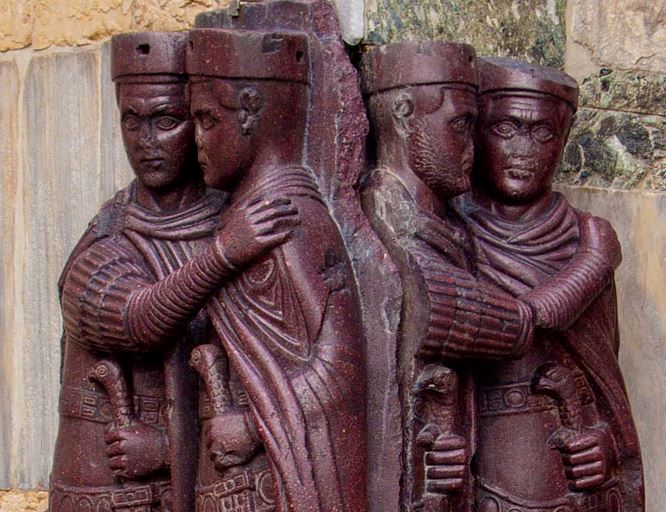
Gaius Aurelius Valerius Diocletianus Augustus, born Diocles, was Roman emperor from 284 to 305.
Born to a family of low status in the Roman province of Dalmatia, Diocletian rose through the ranks of the military to become cavalry commander to the Emperor Carus. After the deaths of Carus and his son Numerian on campaign in Persia, Diocletian was proclaimed emperor. The title was also cl...
Born to a family of low status in the Roman province of Dalmatia, Diocletian rose through the ranks of the military to become cavalry commander to the Emperor Carus. After the deaths of Carus and his son Numerian on campaign in Persia, Diocletian was proclaimed emperor. The title was also cl...
Marcus Aurelius Valerius Maximianus Herculius Augustus was Roman Emperor from 286 to 305.
He was Caesar from 285 to 286, then Augustus from 286 to 305. He shared the latter title with his co-emperor and superior, Diocletian, whose political brain complemented Maximian's military brawn.
In late 306, Maximian took the title of Augustus again and aided his son Maxentius' rebell...
He was Caesar from 285 to 286, then Augustus from 286 to 305. He shared the latter title with his co-emperor and superior, Diocletian, whose political brain complemented Maximian's military brawn.
In late 306, Maximian took the title of Augustus again and aided his son Maxentius' rebell...
Lucius Domitius Domitianus was a Roman usurper against Diocletian, who seized power for a short time in Aegyptus.
He revolted against Diocletian in 297 AD, but died in December of the same year, when Diocletian went to Aegyptus to quell the revolt.
Numismatic and papyrological evidence support Domitianus' claim for the purple. It is possible that the rebellion was sparked by ...
He revolted against Diocletian in 297 AD, but died in December of the same year, when Diocletian went to Aegyptus to quell the revolt.
Numismatic and papyrological evidence support Domitianus' claim for the purple. It is possible that the rebellion was sparked by ...
Marcus Flavius Valerius Constantius Herculius Augustus, commonly known as Constantius Chlorus, was Caesar from 293 to 305, and Augustus in the west from 305 to 306.
He was the father of Constantine the Great and founder of the Constantinian dynasty.
As Caesar, he defeated the usurper Allectus in Britain and campaigned extensively along the Rhine frontier, defeating the Alaman...
He was the father of Constantine the Great and founder of the Constantinian dynasty.
As Caesar, he defeated the usurper Allectus in Britain and campaigned extensively along the Rhine frontier, defeating the Alaman...
Flavia Maximiana Theodora was a Roman Empress, and the second wife of Constantius Chlorus.
The couple married in 293 AD, after Constantius set aside his first wife, Helena, who was the mother of future emperor Constantine the Great.
Although the marriage was political in nature, Theodora and Constantius had six children together; Flavius Dalmatius, Julius Constantius, Hanniba...
The couple married in 293 AD, after Constantius set aside his first wife, Helena, who was the mother of future emperor Constantine the Great.
Although the marriage was political in nature, Theodora and Constantius had six children together; Flavius Dalmatius, Julius Constantius, Hanniba...
Gaius Galerius Valerius Maximianus Augustus was Roman Emperor from 305 to 311.
He served with distinction as a soldier under Emperors Aurelian and Probus, and in 293 at the establishment of the Tetrarchy, was designated Caesar along with Constantius Chlorus, receiving in marriage Diocletian's daughter Galeria Valeria.
Galerius was promoted to Augustus in 305, and laboured for...
He served with distinction as a soldier under Emperors Aurelian and Probus, and in 293 at the establishment of the Tetrarchy, was designated Caesar along with Constantius Chlorus, receiving in marriage Diocletian's daughter Galeria Valeria.
Galerius was promoted to Augustus in 305, and laboured for...
Galeria Valeria was the daughter of Roman Emperor Diocletian and wife of his co-emperor Galerius.
Galeria was raised to the title of Augusta and Mater Castrorum in November 308. She adopted her husband's illegitimate son, Candidianus, as her own.
When Galerius died in 311, Licinius was entrusted with the care of Valeria and her mother Prisca. The two women, however, fled fro...
Galeria was raised to the title of Augusta and Mater Castrorum in November 308. She adopted her husband's illegitimate son, Candidianus, as her own.
When Galerius died in 311, Licinius was entrusted with the care of Valeria and her mother Prisca. The two women, however, fled fro...
Flavius Valerius Severus Augustus was a Western Roman Emperor from 306 to 307.
Severus was of humble birth, born in Northern Illyria around the middle of the third century AD. He rose to become a senior officer in the Roman army, and as an old friend of Galerius, that emperor ordered that Severus be appointed Caesar of the Western Roman Empire.
On the death of Constantius I ...
Severus was of humble birth, born in Northern Illyria around the middle of the third century AD. He rose to become a senior officer in the Roman army, and as an old friend of Galerius, that emperor ordered that Severus be appointed Caesar of the Western Roman Empire.
On the death of Constantius I ...
Marcus Aurelius Valerius Maxentius Augustus was Roman Emperor from 306 to 312. He was the son of former Emperor Maximian and the son-in-law of Emperor Galerius.
When Constantius Chlorus died in 306, his son Constantine was crowned emperor and subsequently accepted by Galerius into the tetrarchy as Caesar. This set the precedent for Maxentius' accession later in the same year.
...
When Constantius Chlorus died in 306, his son Constantine was crowned emperor and subsequently accepted by Galerius into the tetrarchy as Caesar. This set the precedent for Maxentius' accession later in the same year.
...
Valerius Romulus, also Marcus Aurelius Romulus, was the son of the Caesar and later usurper Maxentius and of Valeria Maximilla, daughter of Emperor Galerius.
He was consul with his father in 308 and 309; the fact that Maxentius was the only consul for year 310 suggests that Valerius died in 309.
He was buried in a tomb along the Via Appia. After his death, his status was rai...
He was consul with his father in 308 and 309; the fact that Maxentius was the only consul for year 310 suggests that Valerius died in 309.
He was buried in a tomb along the Via Appia. After his death, his status was rai...
Lucius Domitius Alexander was vicarius of Africa when Emperor Maxentius ordered him to send his son as hostage to Rome. Alexander refused and proclaimed himself emperor in 308.
Apart from the provinces in north Africa (Algeria, Tunisia and western Libya), Domitius Alexander also controlled Sardinia. At the time of his accession, he was already at an advanced age. There is evidence in an...
Apart from the provinces in north Africa (Algeria, Tunisia and western Libya), Domitius Alexander also controlled Sardinia. At the time of his accession, he was already at an advanced age. There is evidence in an...
Gaius Valerius Licinianus Licinius Augustus was a Roman emperor from 308 to 324. Born to a Dacian peasant family, Licinius was a close friend and ally of emperor Galerius.
For most of his reign he was the colleague and rival of Constantine I, with whom he co-authored the Edict of Milan that granted official toleration to Christians in the Roman Empire.
In 324, he was finally ...
For most of his reign he was the colleague and rival of Constantine I, with whom he co-authored the Edict of Milan that granted official toleration to Christians in the Roman Empire.
In 324, he was finally ...
Gaius Valerius Galerius Maximinus Daia Augustus, also known as Maximinus Daia or Maximinus Daza, was Roman Emperor from 308 to 313.
Maximinus was born of Dacian peasant stock to the sister of the emperor Galerius. He rose to high distinction after joining the army.
In 305, his maternal uncle Galerius became the eastern Augustus and adopted Maximinus, raising him to the rank o...
Maximinus was born of Dacian peasant stock to the sister of the emperor Galerius. He rose to high distinction after joining the army.
In 305, his maternal uncle Galerius became the eastern Augustus and adopted Maximinus, raising him to the rank o...
Valerius Licinianus Licinius was the son of Roman emperor Licinius. He nominally served as Caesar in the eastern empire from 317 to 324 AD while his father was Augustus.
After his father's defeat by Constantine at the Battle of Chrysopolis, Licinius the elder was initially spared and placed in captivity at Thessalonica. However, within a year Constantine seems to have regretted his leni...
After his father's defeat by Constantine at the Battle of Chrysopolis, Licinius the elder was initially spared and placed in captivity at Thessalonica. However, within a year Constantine seems to have regretted his leni...
Aurelius Valerius Valens was Roman Emperor from late 316 to March 1, 317. Valens had previously been dux limitis (duke of the frontier) in Dacia.
Valens was named emperor by Licinius during the first civil war between himself and Constantine I. After losing the Battle of Cibalae, Constantine forced Licinius to depose Valens.
The peace treaty was finalized at Serdica on 1 Marc...
Valens was named emperor by Licinius during the first civil war between himself and Constantine I. After losing the Battle of Cibalae, Constantine forced Licinius to depose Valens.
The peace treaty was finalized at Serdica on 1 Marc...
Sextus Marcius Martinianus was Roman Emperor from July to 18 September 324. He was appointed co-emperor by Licinius.
In 324, as the second civil war between Licinius and Constantine I was at its height, the situation for Licinius was not promising. He decided to replace Constantine (in name only) as western Augustus. As his replacement he named Martinian co-emperor, as he had previously...
In 324, as the second civil war between Licinius and Constantine I was at its height, the situation for Licinius was not promising. He decided to replace Constantine (in name only) as western Augustus. As his replacement he named Martinian co-emperor, as he had previously...

